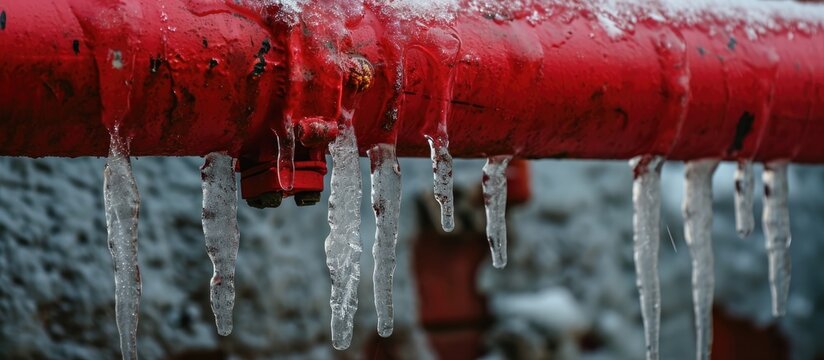Important Advice to Avoid Frozen Plumbing in Cold Weather: Professional Guidance
Important Advice to Avoid Frozen Plumbing in Cold Weather: Professional Guidance
Blog Article
They are making a few great observations about How to prepare your home plumbing for winter weather as a whole in this content on the next paragraphs.

Winter can wreak havoc on your pipes, specifically by freezing pipes. Below's just how to stop it from occurring and what to do if it does.
Intro
As temperature levels drop, the risk of icy pipelines rises, possibly leading to costly repairs and water damage. Recognizing how to avoid icy pipelines is important for home owners in cold environments.
Avoidance Tips
Insulating at risk pipes
Wrap pipes in insulation sleeves or utilize warm tape to shield them from freezing temperature levels. Focus on pipes in unheated or exterior locations of the home.
Heating strategies
Maintain indoor spaces properly heated up, specifically locations with pipes. Open up cabinet doors to permit warm air to flow around pipes under sinks.
How to identify frozen pipelines
Seek reduced water circulation from taps, uncommon smells or sounds from pipes, and noticeable frost on exposed pipes.
Long-Term Solutions
Structural modifications
Consider rerouting pipes far from outside walls or unheated areas. Add additional insulation to attic rooms, cellars, and crawl spaces.
Upgrading insulation
Purchase top quality insulation for pipes, attics, and walls. Proper insulation assists maintain consistent temperature levels and decreases the danger of icy pipes.
Safeguarding Exterior Pipes
Yard hose pipes and exterior taps
Detach and drain garden pipes prior to winter season. Install frost-proof spigots or cover exterior taps with protected caps.
Recognizing Icy Pipes
What creates pipes to freeze?
Pipelines freeze when revealed to temperature levels listed below 32 ° F (0 ° C) for extended periods. As water inside the pipes freezes, it expands, taxing the pipe walls and possibly creating them to burst.
Dangers and problems
Icy pipelines can cause water supply interruptions, home damage, and costly repair work. Ruptured pipelines can flooding homes and create substantial architectural damage.
Indicators of Frozen Piping
Identifying frozen pipelines early can prevent them from bursting.
What to Do If Your Pipes Freeze
Immediate activities to take
If you presume frozen pipes, maintain faucets open up to eliminate pressure as the ice melts. Use a hairdryer or towels soaked in hot water to thaw pipes gradually.
Final thought
Avoiding frozen pipes calls for aggressive steps and quick reactions. By understanding the reasons, signs, and safety nets, property owners can shield their plumbing throughout cold weather.
6 Proven Ways to Prevent Frozen Pipes and Protect Your Home
Disconnect and Drain Garden Hoses
Before winter arrives, start by disconnecting your garden hoses and draining any remaining water. Close the shut-off valves that supply outdoor hose bibs and leave the outdoor faucet open to allow any residual water to drain. For extra protection, consider using faucet covers throughout the colder months. It’s also important to drain water from any sprinkler supply lines following the manufacturer’s directions.
Insulate Exposed Pipes
Insulating your pipes is an effective way to prevent freezing. Pipe insulation is readily available at home improvement stores and is relatively inexpensive. Pay close attention to pipes in unheated areas such as the attic, basement, crawl spaces, or garage. Apply foam insulation generously to create a buffer against the cold. You can also wrap your pipes in heat tape or thermostat-controlled heat cables for added warmth.
Seal Air Leaks
Inspect your home for any cracks or openings that could let in cold air. Seal any holes around the piping in interior or exterior walls, as well as the sill plates where your home rests on its foundation. Additionally, make sure to keep your garage door closed unless you’re entering or exiting. Leaving it open creates a significant air leak that can lead to frozen pipes.
Allow Warm Air Circulation
During cold snaps, it’s essential to allow warm air to circulate evenly throughout your home. Leave interior doors ajar to promote better airflow. Open kitchen and bathroom cabinets to help distribute heat consistently around the rooms. If you have small children or pets, be sure to remove any household chemicals or potentially harmful cleaners from open cabinets for safety.
Let Faucets Drip
A small trickle of water can make a big difference in preventing ice formation inside your pipes. When temperatures drop significantly, start a drip of water from all faucets served by exposed pipes. This continuous flow helps prevent the water from freezing. Additionally, running a few faucets slightly can relieve pressure inside the pipes, reducing the chances of a rupture if the water inside does freeze.
https://choateshvac.com/6-proven-ways-to-prevent-frozen-pipes-and-protect-your-home/

We were made aware of that editorial on Winter Plumbing Precautions: Preventing Frozen Pipes through a pal on our other blog. Those who enjoyed our article plz do not forget to pass it around. Thanks a bunch for being here. Kindly stop by our site back soon.
Request Appointment Report this page